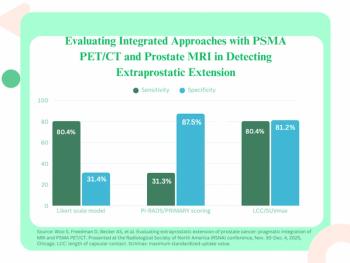
Algorithm Can Classify Major Intracranial Tumor Types from a Single MRI Scan
The algorithm is the first step towards developing an artificial intelligence-augmented radiology workflow that can support image interpretation to improve diagnosis and prognosis.
A newly developed algorithm was able to accurately classify six different types of brain tumor and discriminate pathologic from healthy magnetic resonance imaging (MRI) scans, according to a study published in
In this retrospective study, Satrajit Chakrabarty, Ph.D. candidate in electrical engineering at Washington University in St Louis, and colleagues developed a three-dimensional (3D) convolutional neural network model for classifying MRI scans into a healthy class and six tumor classes: high-grade glioma, low-grade glioma, brain metastases, meningioma, pituitary adenoma and acoustic neuroma.
“This is the first study to address the most common intracranial tumor-types and directly determine the tumor class as well as detect the absence of tumor from a 3D MR volume,” the authors said. “Without the assistance of any manually segmented tumor or bounding box, the convolutional neural network model…could classify six brain tumor types and discriminate
healthy from pathological scans from a single post-contrast T1-weighted scan per patient.”
The researchers included 2105 preoperative post-contrast T1-weighted MRI scans from four publicly available datasets, and 1396 scans were used to train the model, while 361 scans were assigned to an internal test dataset and 348 scans were assigned to an external test dataset.
On the internal test dataset, across the seven different classes, the model achieved sensitivity of 87% to 100%, a positive predictive value (PPV) of 85% to100%, area under the receiver operating characteristic curve (AUC) of 0.98 to 1.00 and precision-recall curve (AUPRC) of 0.91 to 1.00. On the external test dataset, comprising high-grade glioma and low-grade glioma, the model achieved sensitivity of 91% to 97%, a PPV of 73% to 99%, AUC of 0.97 to 0.98 and AUPRC of 0.9 to 1.0.
Of the seven classes addressed, more errors were observed for high-grade glioma, low-grade glioma and healthy. The authors explained that the reason for the misclassification between low-grade glioma and healthy classes may be due to less contrast enhancement of low-grade gliomas in post-contrast T1-weighted MRI scans due to less disruption of the blood-brain barrier.
“The model can be extended to other brain tumor types or neurologic disorders that exhibit
anomalous intensity profiles in MRI scans,” the authors said. “The network is the first step toward developing an artificial intelligence-augmented radiology workflow that can support image interpretation by providing quantitative information and statistics to the clinician to help improve diagnosis and prognosis.”
Newsletter
Stay at the forefront of radiology with the Diagnostic Imaging newsletter, delivering the latest news, clinical insights, and imaging advancements for today’s radiologists.




























